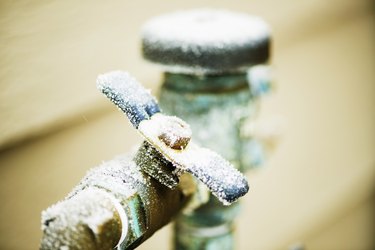Important Advice to Prevent Frozen Plumbing in Winter: Specialist Guidance
Important Advice to Prevent Frozen Plumbing in Winter: Specialist Guidance
Blog Article
Just how do you actually feel on the subject of How to prepare your home plumbing for winter weather?

Cold weather can wreak havoc on your plumbing, especially by freezing pipelines. Right here's how to stop it from taking place and what to do if it does.
Intro
As temperature levels decrease, the danger of frozen pipes rises, possibly bring about pricey repair services and water damage. Understanding how to avoid frozen pipelines is vital for home owners in cold environments.
Prevention Tips
Protecting at risk pipelines
Cover pipelines in insulation sleeves or utilize warmth tape to safeguard them from freezing temperature levels. Concentrate on pipelines in unheated or outside areas of the home.
Heating methods
Maintain indoor spaces sufficiently heated, especially areas with plumbing. Open up cabinet doors to allow warm air to circulate around pipes under sinks.
How to identify icy pipelines
Seek reduced water circulation from faucets, uncommon smells or sounds from pipelines, and visible frost on exposed pipes.
Long-Term Solutions
Architectural adjustments
Think about rerouting pipes far from outside walls or unheated areas. Add additional insulation to attic rooms, cellars, and crawl spaces.
Updating insulation
Purchase premium insulation for pipelines, attics, and wall surfaces. Proper insulation helps maintain regular temperature levels and minimizes the risk of icy pipelines.
Securing Outside Plumbing
Garden hose pipes and outdoor taps
Separate and drain garden tubes before winter months. Set up frost-proof faucets or cover outside faucets with shielded caps.
Comprehending Icy Pipes
What triggers pipelines to freeze?
Pipelines freeze when subjected to temperatures listed below 32 ° F (0 ° C) for extended periods. As water inside the pipelines freezes, it increases, putting pressure on the pipe wall surfaces and possibly creating them to rupture.
Threats and problems
Icy pipelines can bring about water system interruptions, residential or commercial property damages, and costly repairs. Burst pipelines can flooding homes and cause substantial architectural damage.
Indications of Frozen Piping
Recognizing icy pipes early can avoid them from rupturing.
What to Do If Your Pipelines Freeze
Immediate activities to take
If you believe icy pipes, keep faucets open to alleviate pressure as the ice melts. Make use of a hairdryer or towels soaked in warm water to thaw pipes gradually.
Conclusion
Avoiding frozen pipelines needs aggressive measures and quick feedbacks. By recognizing the reasons, indications, and preventive measures, homeowners can safeguard their plumbing throughout cold weather.
5 Ways to Prevent Frozen Pipes
Drain Outdoor Faucets and Disconnect Hoses
First, close the shut-off valve that controls the flow of water in the pipe to your outdoor faucet. Then, head outside to disconnect and drain your hose and open the outdoor faucet to allow the water to completely drain out of the line. Turn off the faucet when done. Finally, head back to the shut-off valve and drain the remaining water inside the pipe into a bucket or container. Additionally, if you have a home irrigation system, you should consider hiring an expert to clear the system of water each year.
Insulate Pipes
One of the best and most cost-effective methods for preventing frozen water pipes is to wrap your pipes with insulation. This is especially important for areas in your home that aren’t exposed to heat, such as an attic. We suggest using foam sleeves, which can typically be found at your local hardware store.
Keep Heat Running at 65
Your pipes are located inside your walls, and the temperature there is much colder than the rest of the house. To prevent your pipes from freezing, The Insurance Information Institute suggests that you keep your home heated to at least 65 degrees, even when traveling. You may want to invest in smart devices that can keep an eye on the temperature in your home while you’re away.
Leave Water Dripping
Moving water — even a small trickle — can prevent ice from forming inside your pipes. When freezing temps are imminent, start a drip of water from all faucets that serve exposed pipes. Leaving a few faucets running will also help relieve pressure inside the pipes and help prevent a rupture if the water inside freezes.
Open Cupboard Doors
Warm your kitchen and bathroom pipes by opening cupboards and vanities. You should also leave your interior doors ajar to help warm air circulate evenly throughout your home.

I was introduced to that write-up on How to Prevent Your Pipes From Freezing through a buddy on another web page. Are you aware of another person who is excited by the topic? Be sure share it. Thank-you for your time spent reading it.
Book A Free Estimate Report this page